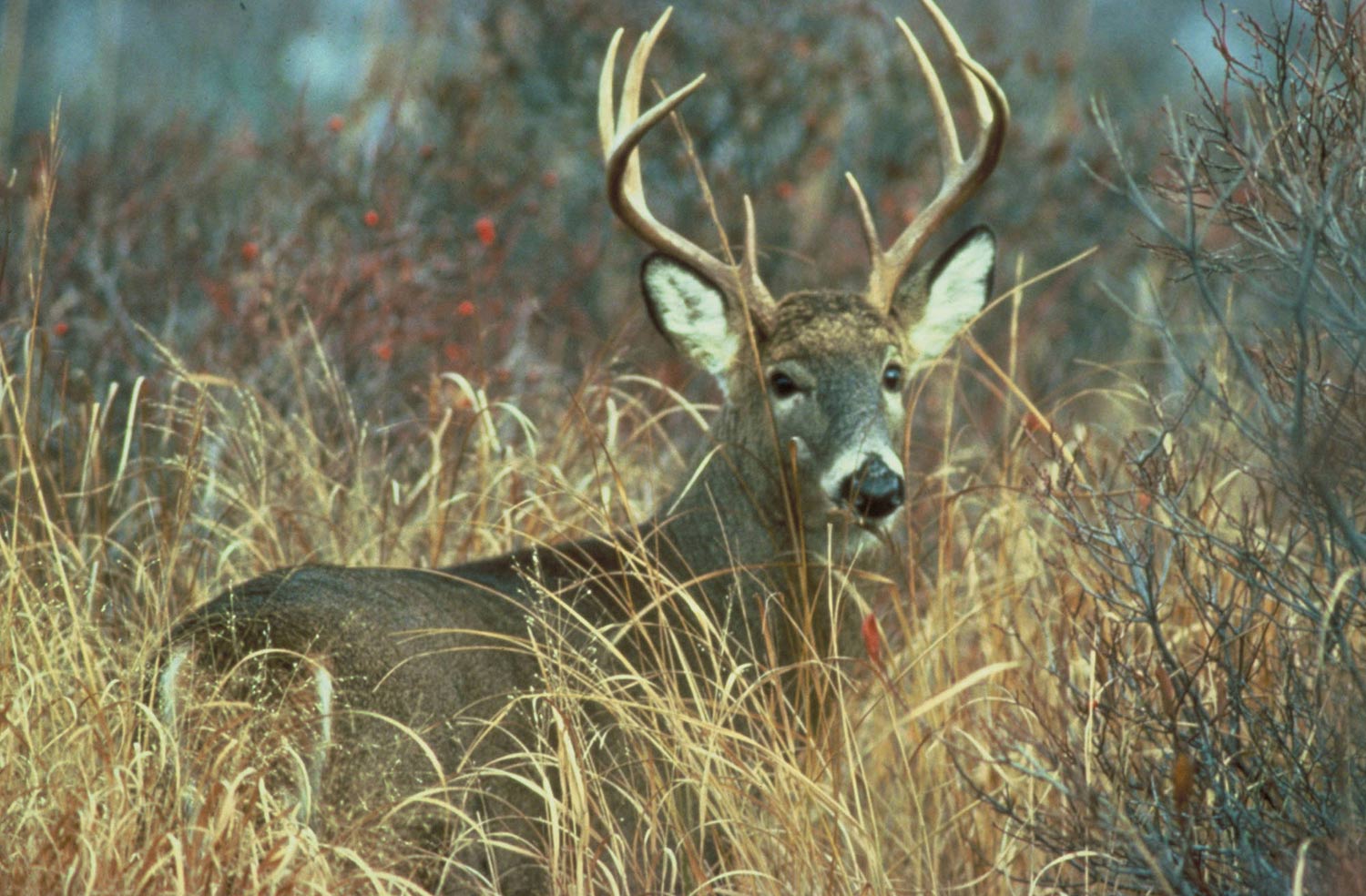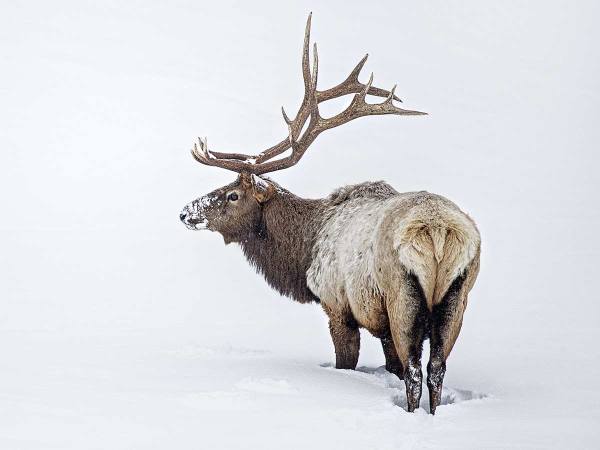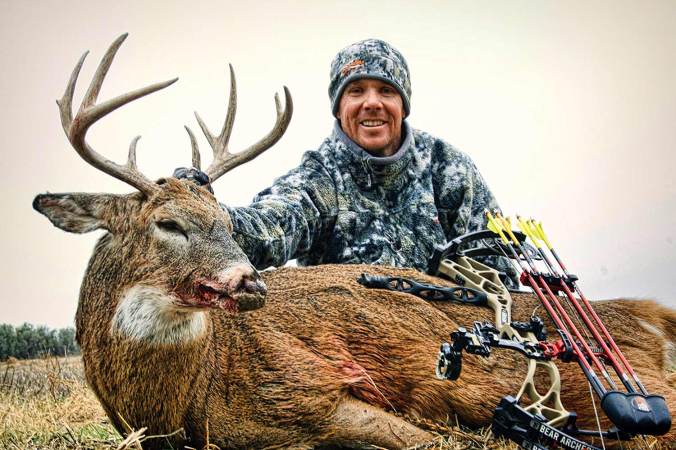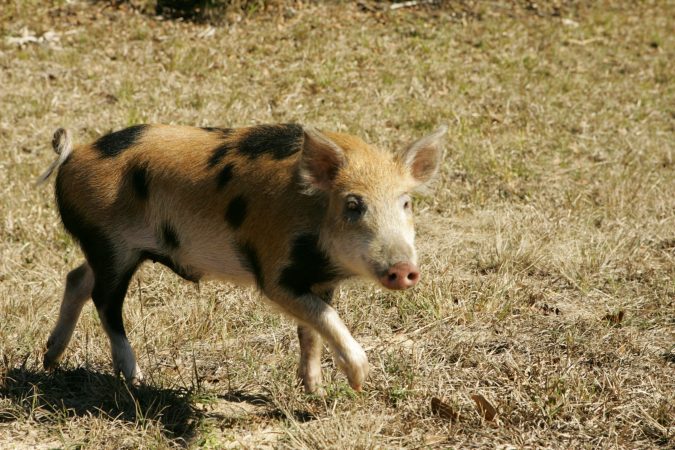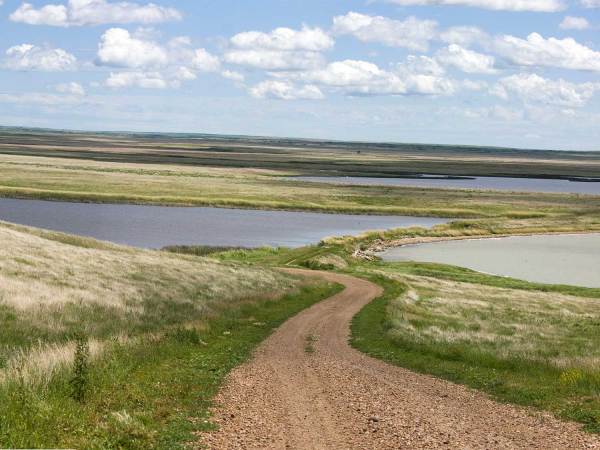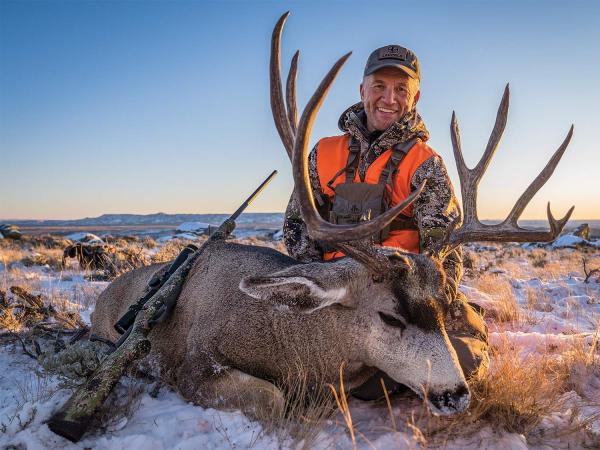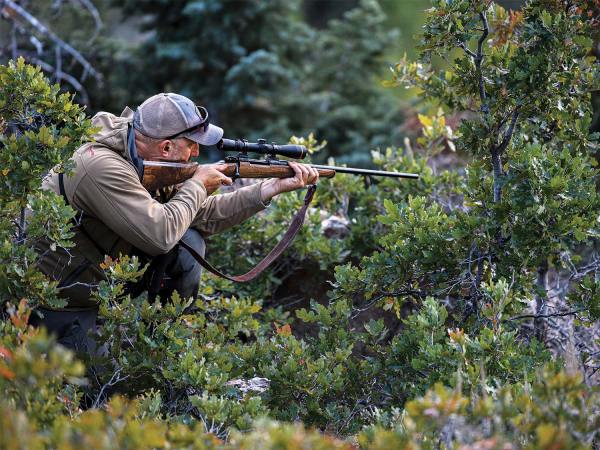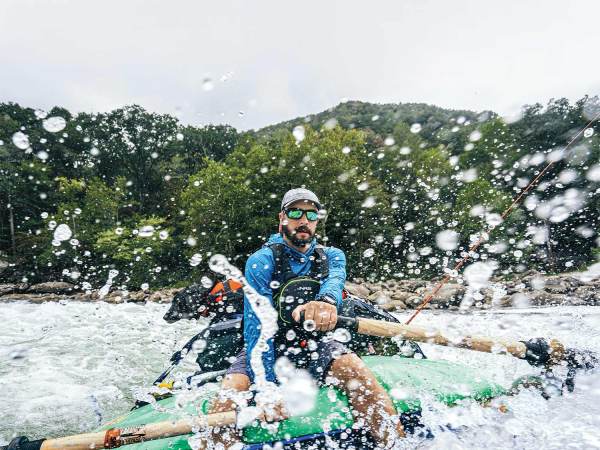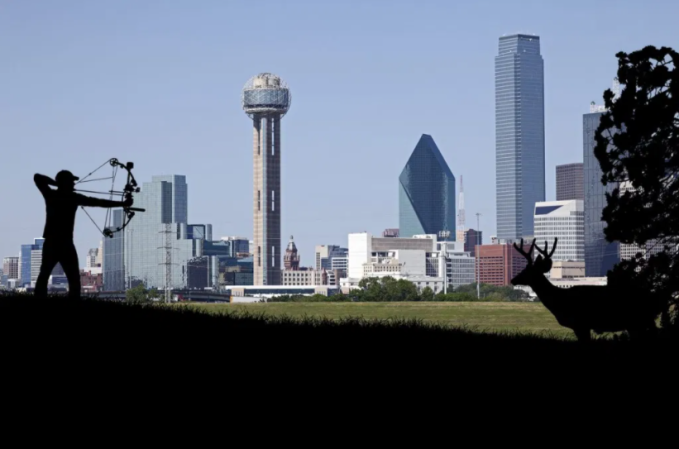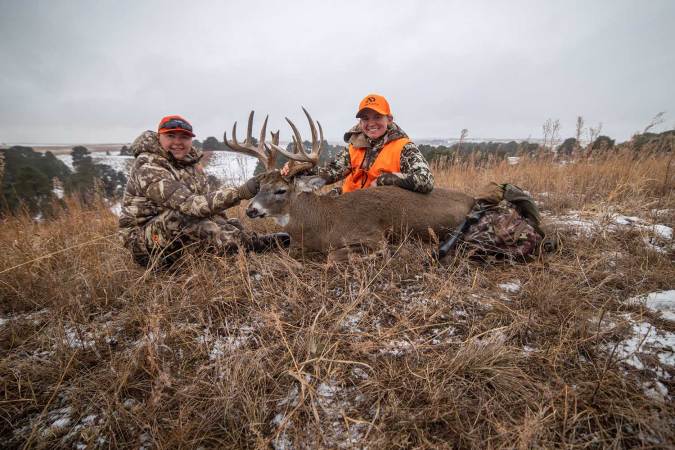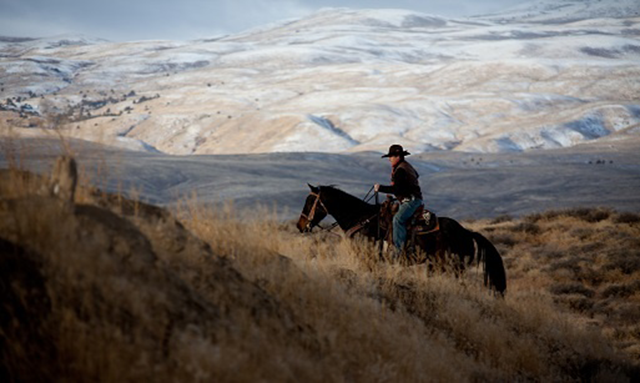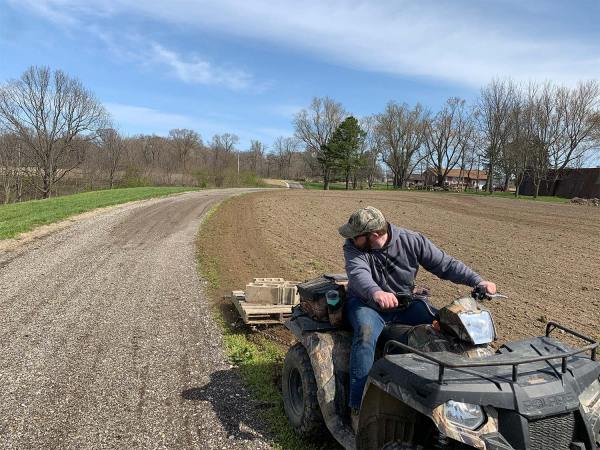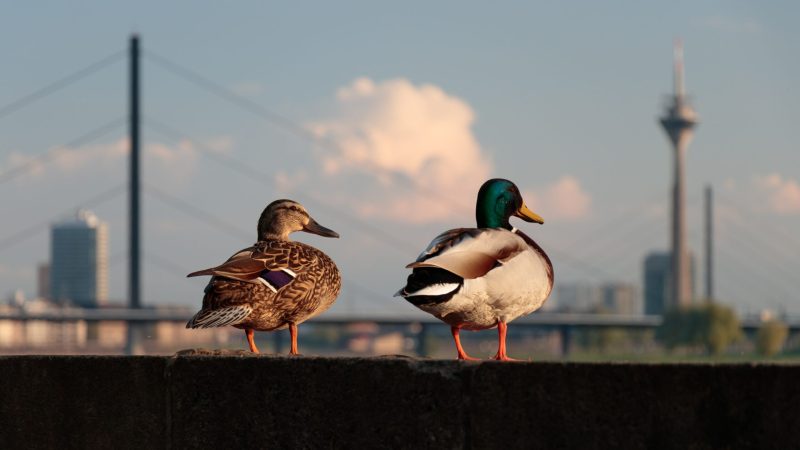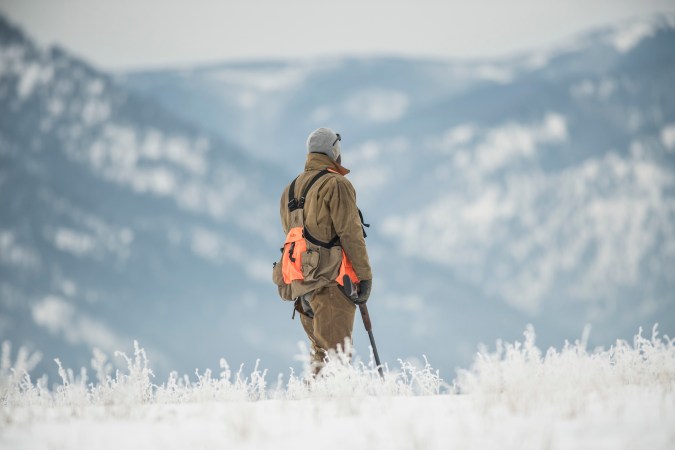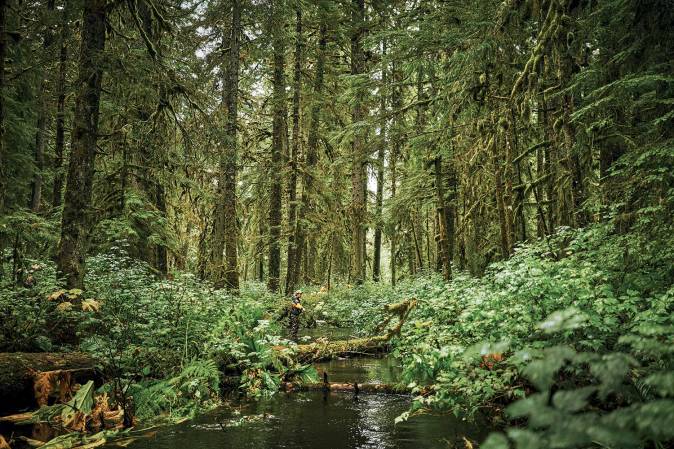If you live in a big city and love to hunt and fish, it can be a struggle to find a place to pursue those passions and find success. Hooking into a hot bed of smallies or shooting a doe, few ducks or rabbits for the pot is more difficult in urban areas than the back 40. But in many cases, outdoor opportunities are abound right outside city limits, it’s just a matter of finding them. That’s where this list comes in. It will give you better options to find the public access closest to you. Just remember when folks at the check station ask how you found out about their honey hole, mum’s the word.
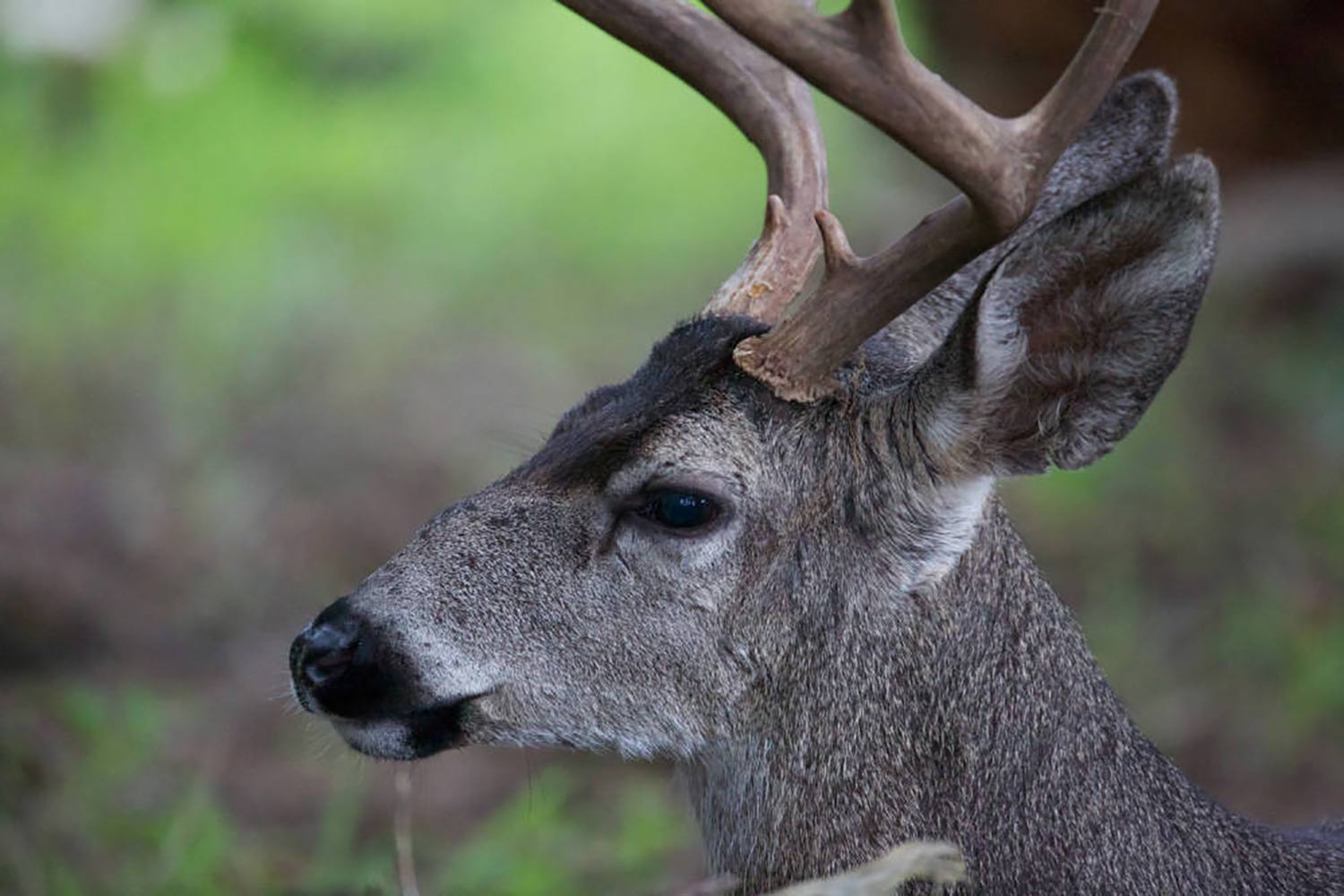
New York City
Best Public Option: New York City Department of Environmental Protection Watershed Lands
Best Species to Hunt/Fish: Whitetail deer, largemouth bass
Distance from City: 20 miles
Acres: 130,000
Fortunately for residents of the city that never sleeps, the New York City Department of Environmental Protection Watershed Lands offer deer, bear, turkey, and small game hunting opportunities a short drive from Gotham. This vast network of lands starts about 20 miles from Manhattan and stretches up through central New York. In addition to the appropriate state licenses, hunters must possess a free access permit to hunt or fish on designated areas on the City’s Water Supply Lands.
The plots closest to NYC in Westchester County are an urban bowhunter’s dream. The lands surrounding the Cross River, New Croton, Muscoot, Kensico, and Amawalk Reservoirs are broken into parcels of 200 to 300 deer-laden acres, offering easy access. Slightly further north in Putnam County, an abundance of whitetails and cooperative hunters have caused the NYC DEP to institute tenets of Quality Deer Management on some units, which ups the potential to produce giants. Hunters are encouraged to take does; the DEP will occasionally even make additional antlerless tags available through a lottery. On the first two days of bow, gun, and muzzleloader seasons in the QDM areas, only does may be harvested. On all other days, bucks may only be taken if they have an antler spread of at least 15 inches in width and/or a minimum of three points on a side greater than one inch long, excluding brow tines.
Dropping a boat will also require a free permit, which may involve a wait list of up to seven years depending on the waterway. The boat must be chained up alongside the reservoir. If you’re not willing to jump through these hoops, you can fish from rental canoes and kayaks on some reservoirs or get in on the action from the shore access sites. Kensico Reservoir, about 20 miles from the Big Apple, has a well-deserved reputation for producing monster largemouth bass. The state stocks about 8,000 brown trout every spring, which provide sport for anglers and forage for hungry bass. —Joseph Albanese
Los Angeles
Best Public Option: Angeles National Forest
Best Species to Hunt/Fish: Mule, whitetail, blacktail deer
Distance from City: 26 miles
Acres: 694,187
It makes sense to have a combo hunt/fish license in your pocket if you head to the Angeles National Forest. Located about an hour outside of L.A., the forest, which encompasses the San Gabriel Mountain range, allows hunting in designated areas and an abundance of fishing opportunities. According to the California Department of Fish and Game (CDFG), there is plenty of public land with excellent access and the rivers and streams are stocked occasionally with bass and trout as part of CDFG’s stocking program. Some of the ANF’s best deer hunting can be found in San Gabriel Canyon, Glendora Ridge, Lake Castaic, Mt. Gleason or the Altadena area. Whitetail, mule and blacktail deer are all huntable. Remember, you can only use lead-free ammo in California.
Frenchman’s Flat Day Use Area is 2,200 acres and known for its native trout fishery. Other fishing options include Coldbrook campground, Fisherman’s Point on Little Rock Reservoir, Emigrant Landing and West Fork. There is typically a $5 per day fee to get access to these sites.—Kristen A. Schmitt
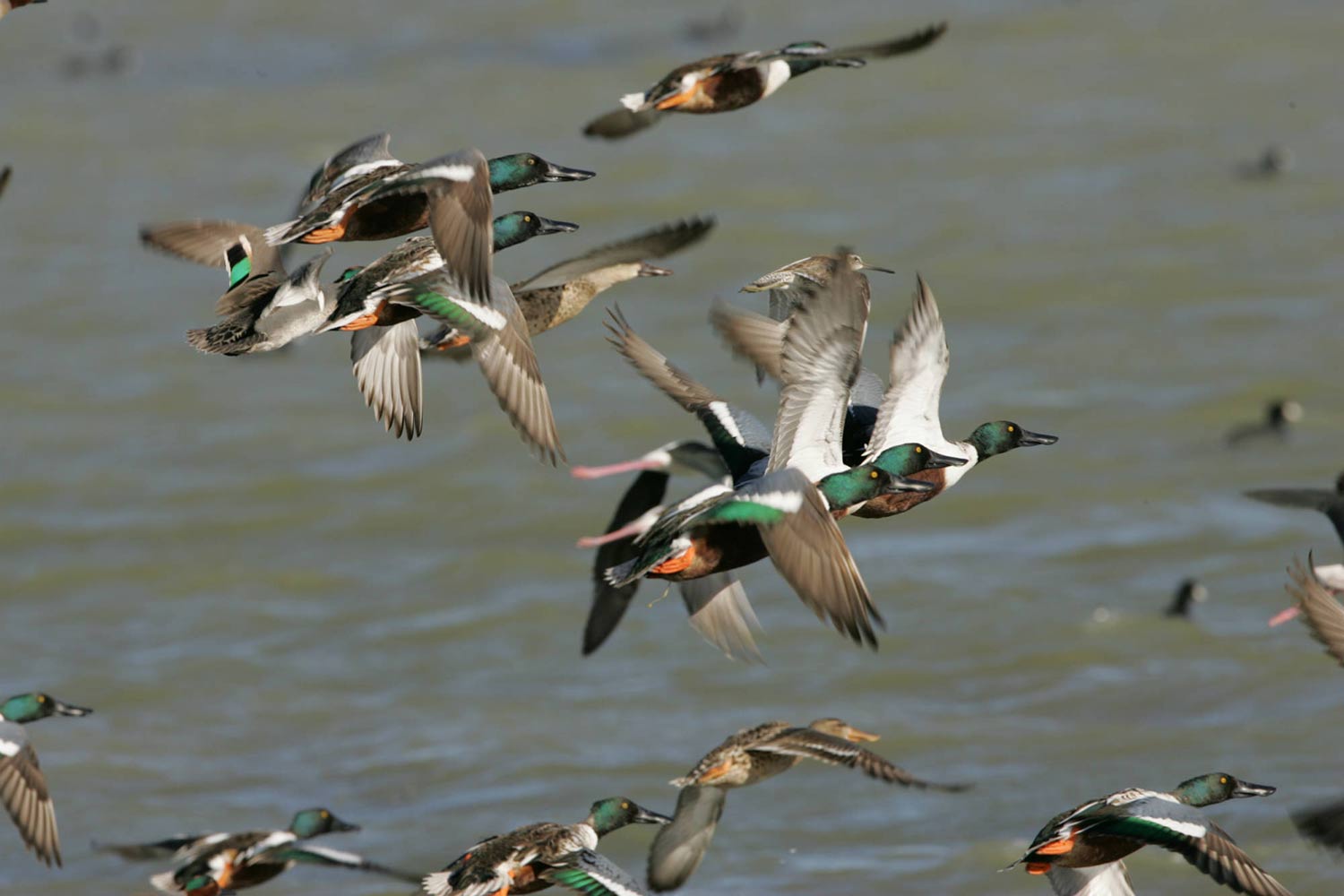
Houston
Best Public Option: Anahuac National Wildlife Refuge
Best Species to Hunt/Fish: Blue- and green-wing teal, mottled duck, gadwall, pintail and northern shoveler
Distance from City: 45 miles
Acres: 34,000
Coastal marsh and prairie add up to the perfect equation for quality waterfowl hunting in the Anahuac National Wildlife Refuge in southeast Texas. According to the U.S. Fish and Wildlife Service (USFWS), the refuge is home to a variety of wildlife, ranging from migratory birds to alligators, bobcats and more. But waterfowl hunting is one of its primary recreational uses. This is in part because of the management strategy in place for protecting nesting and breeding areas for waterfowl, shorebirds and waterbirds. Over 40 percent of the refuge is open to waterfowl hunting; however, you should contact the refuge headquarters before heading out for current regulations and permits. You must carry a free general permit when hunting on the refuge and a separate permit to hunt the East Unit, which cost $10 per day or $40 for an annual license.
You can also try fishing from one of three piers for a variety of freshwater fish like crappie, largemouth bass, alligator gar, bowfin, channel and blue catfish. Or, because of where the refuge is situated, you can also try saltwater fishing along the shorelines on East Galveston Bay for speckled trout, redfish, and southern flounder. Be aware that certain rules apply to boat usage in the refuge as well. —K.S.
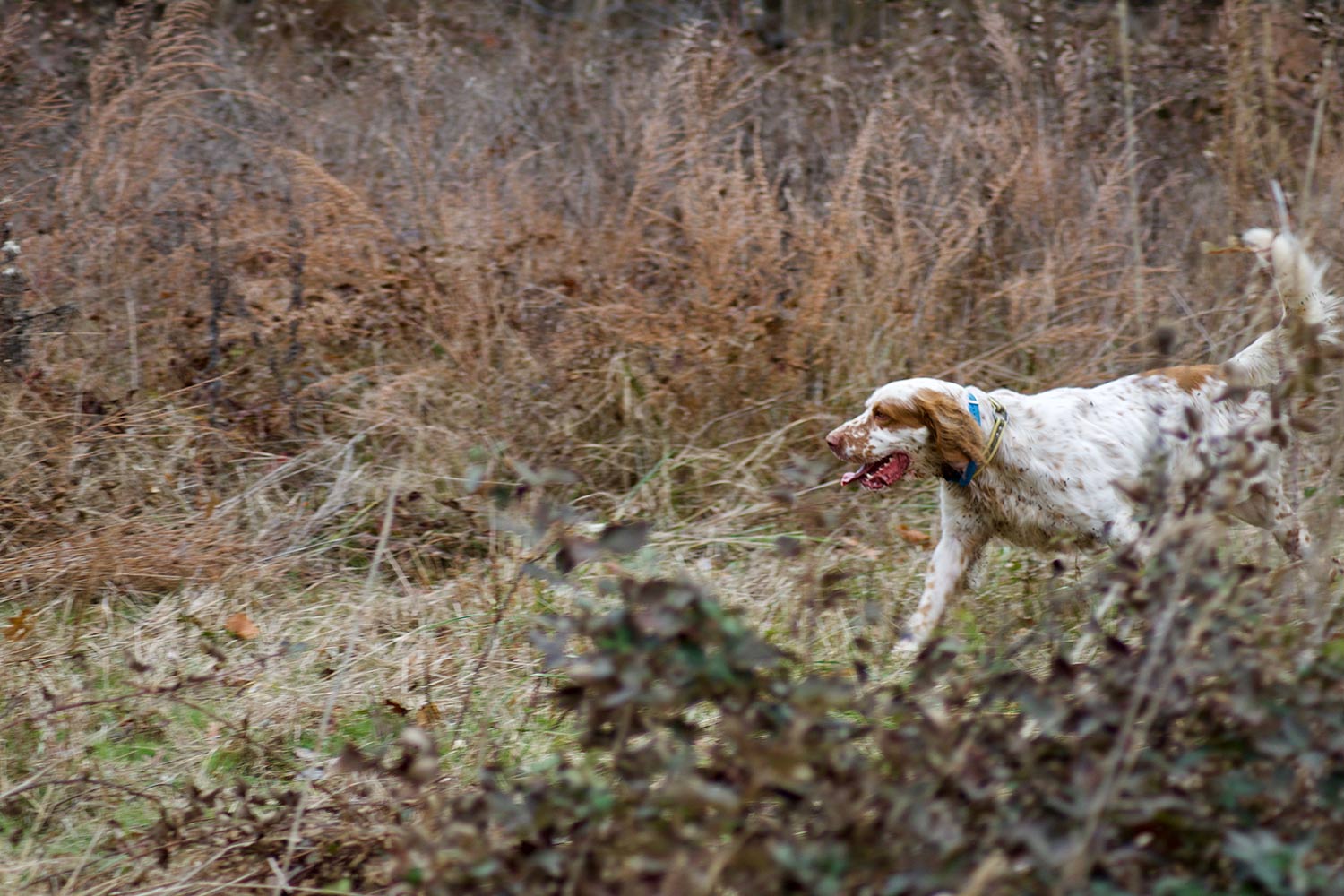
Chicago
Best Public Option: Des Plaines State Fish and Wildlife Area
Best Species to Hunt/Fish: Pheasant
Distance from City: 58 miles
Acres: 5,400
The lack of funding for state lands in Illinois has led to some tough times for public hunters. Most site managers work hard with what they have at their disposal, and the pheasant program at Des Plaines SFWA is a prime example. The upland fields are well-kept, and starting in late October through early January, the site is stocked with pheasants Wednesday-Sunday. Resident hunters pay $30 a day ($35 for non-resident) and are allowed a two-bird limit. You have to apply for a permit (or go on standby the morning of the hunt), which can be done through the Illinois Department of Natural Resources website.
Site manager Jeff Wepprecht suggests you apply for the permit because they release birds the night before based on the number of hunters expected. During the week, hunter numbers fluctuate between 50 to 100, but on weekends expect 175 to 215. A permit assures your group a field, so it’s smart to go that route. It also means more birds will be put out the night before. Hunting begins at 9 a.m. and closes at 4 p.m. You will be assigned a field, but after the first hour hunters are allowed to roam the entire upland unit.
Whitetail bow hunters are free to hunt everyday until the pheasant season begins. You just have to apply for a windshield tag (a simple process), which must be displayed when you park. Once the pheasant season is in, bow hunters are limited to Monday and Tuesday. Des Plaines also accommodates 35 hunters for the first three-day deer gun season. That is also done by permit through the IDNR site. There are 30 stakes on the Des Plaines River for duck hunting, which are drawn by lottery at the site the last weekend in July. You show up, put your name in the hat, and if it gets drawn, you have a blind for the season, which you must build (sometimes blinds are left over from the previous season, but don’t bank on it). Hunters must be in the blind 30 minutes prior to shooting light. After that, anyone can claim the blind.
Anglers can fish the Kankakee and Des Plaines River, plus there is a smaller 20-acre pond on the property. Most common species are catfish, walleye, bass, crappie and bluegill. —Joe Genzel
San Francisco
Best Public Option: Don Edwards San Francisco Bay National Wildlife Refuge
Best Species to Hunt/Fish: Mallards, pintail, canvasback, redheads, scaup, Canada geese
Distance from City: 34 miles
Acres: 30,000 (waterfowl hunting allowed on 10,000)
With over 10,000 acres of salt ponds and tidal areas, the Don Edwards San Francisco Bay National Wildlife Refuge is a waterfowl hunting mecca only a short drive from San Francisco. While most of the region is maintained by the East Bay Regional Parks, the refuge is administered by the U.S. Fish and Wildlife Service and includes a variety of trails and even a stone quarry.
Waterfowl hunting is allowed on Wednesdays, Saturdays, and Sundays at eight of the nine Alviso Ponds sites (pond A19 is huntable seven days a week). To hunt Alviso requires a refuge waterfowl hunting permit. For some of the sites you will need a boat or kayak to access the blinds or stakes. In some cases it’s hunt by boat only. Ravenswood Ponds, Bair Island, and Greco Island are open to hunters every day during the season. Mowry Ponds is also open seven days a week, just as long as Cargill, which manages the ponds for salt production, isn’t dredging or working on the levees. —K.S.
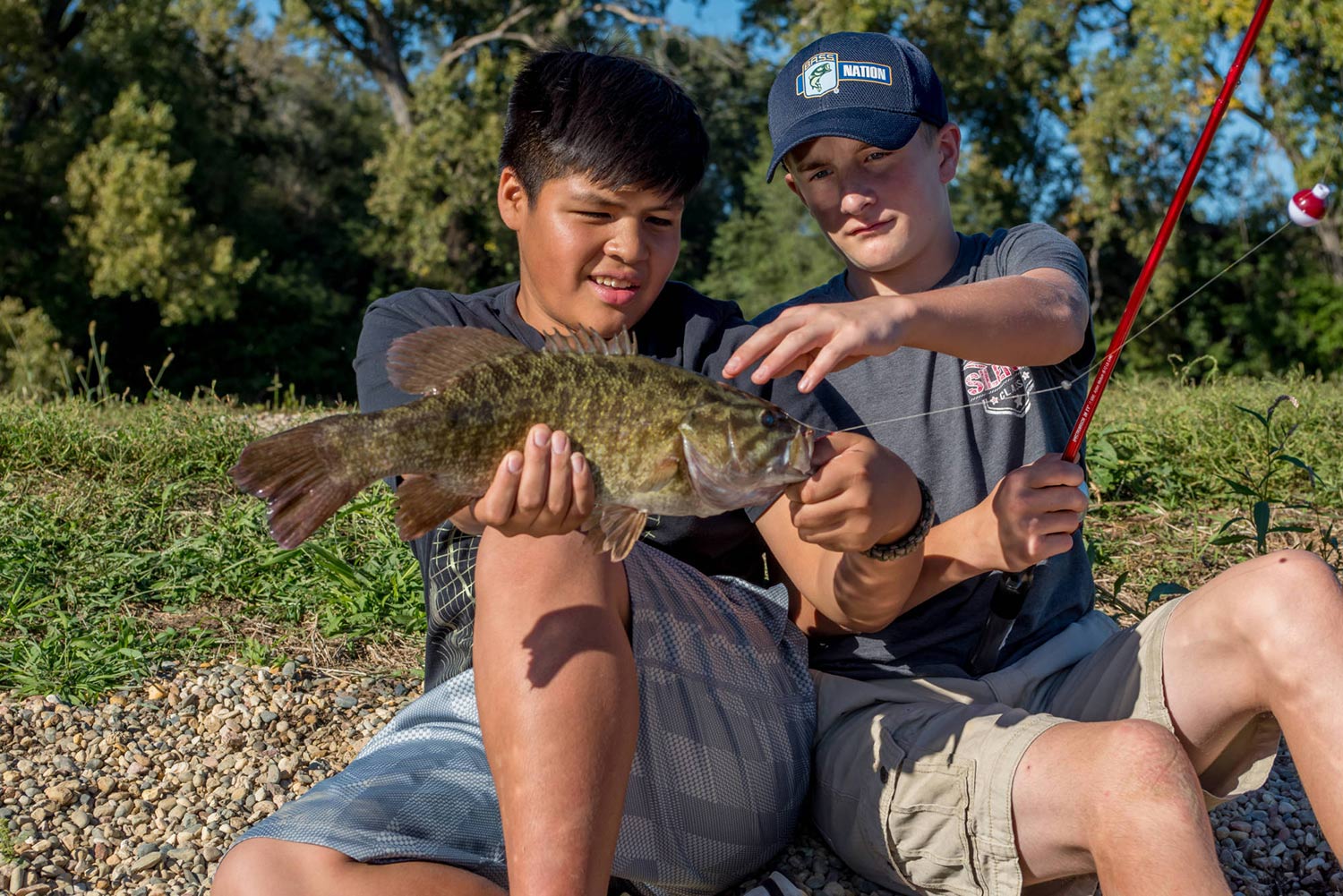
Detroit
Best Public Option: Lake St. Clair
Best Species to Hunt/Fish: Wood ducks, bass, musky
Distance from City: 6 miles
Acres: 430 square miles
Travel east down Jefferson Avenue past Belle Isle and Indian Village about six miles and you’ll find yourself at Lake St. Clair. The freshwater lake, sandwiched between Great Lakes Huron and Erie is extremely diverse in its offerings, says Lake Erie Basin Coordinator Jim Francis. It’s definitely a destination for smallmouth bass and musky, though you will need a boat to target those species. Fortunately, there’s plenty of charters and guide services in the area. If shore fishing is more appealing, Francis says you’ll also get your chance to hook walleye, yellow perch, northern pike, bluegill, and crappie. You can ice fish when the temperatures drop. A fisherman’s paradise, Francis says Lake St. Clair is “a treasure for sure.”
St. Clair is also an iconic stopover for Mississippi flyway birds, though it doesn’t get the bird numbers it once did. The St. John’s Unit Marsh Unit is open to public hunting with no permit required. That means if you have the proper hunting license, you can access it. Harsens Island Wildlife Area is close by and it has general hunting areas and managed hunting zones that are operated on a draw system. Whitetail and other small game hunting is also allowed on public lands, but is done sparingly. —K.S.
Dallas
Best Public Option: White Rock Lake
Best Species to Hunt/Fish: Largemouth bass
Distance from City: 5 miles
Acres: 1,088
Located a mere five miles northeast of downtown Dallas, White Rock Lake comes highly recommended by pro bass angler Cheryl Bowden if you’re after an afternoon of fishing only 20 minutes outside of the city. A tributary of the Trinity River, the lake is a popular spot with plenty of bank access and several piers located around its circumference. There’s a kayak concession and boat ramps if you want to try your fishing prowess in the 20-foot deep lake.
Bowden says that “folks can catch a variety of fish like bass, catfish, and bluegill year-round” and, according to Texas Parks and Wildlife, white crappie is a “sure bet” in the spring. Largemouth bass are usually lurking in reed beds, creek mouths or up Dickson Branch. Regular fishing regulations apply. There’s a 9.9-horsepower limit on boat motors and anglers are allowed to use electric trolling motors.
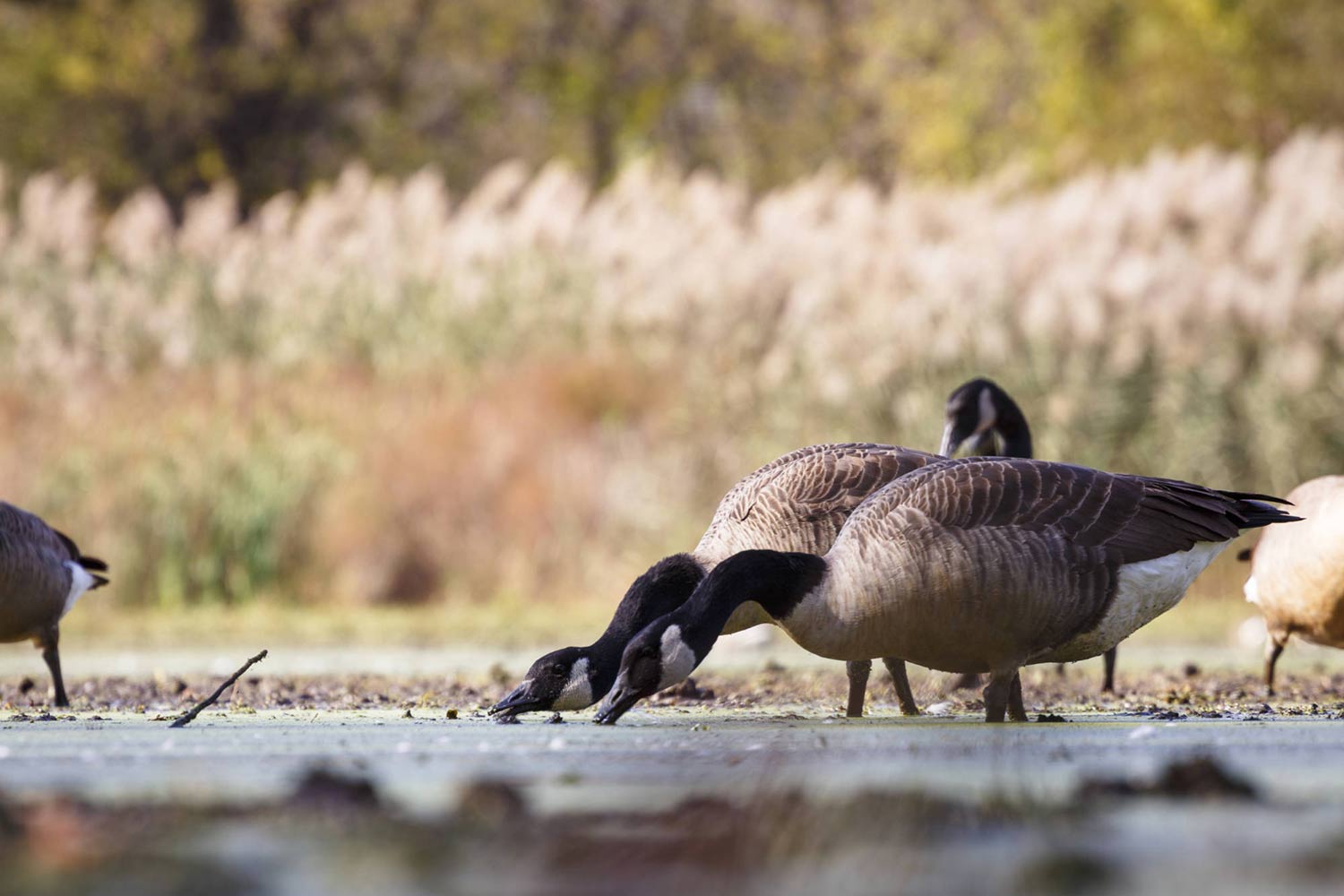
Philadelphia
Best Public Option: John Heinz National Wildlife Refuge at Tinicum
Best Species to Hunt/Fish: Catfish, bass, carp
Distance from City: 10 miles
Acres: 1,000
If you’re a beginner or a veteran hunter—or just want to fish without getting out of the city—then the John Heinz NWR at Tinicum is for you. Adjacent to Philadelphia International Airport, this is a hidden gem for anyone who wants to hunt or fish, but doesn’t want (or have the time) to travel that far, says Sisterhood of the Outdoors field staffer and Pennsylvanian Nikki Plum. Fish for carp, catfish, largemouth bass, pan fish, striped bass, and musky at Darby Creek or along the main dike trail that connects the big boardwalk to the Trolley Bed trail or the Route 420 lagoons.
The only caveat is while fishing is open to anyone with a valid fishing license—the refuge provides free fishing pole rentals—deer hunting is limited to mentored hunters, active duty military, veterans, or people with disabilities. The site will issue antlerless deer permits by lottery in the summer. In partnership with the Pennsylvania Game Commission and Quality Deer Management Association, John Heinz NWR provides instruction, game care, meat processing, and more. Crossbows and ground blinds are provided free of charge. Minors must be accompanied by a parent or guardian. —K.S.
Read Next: 15 Deer Hunting Tips from Two Big Buck Bowhunters
Miami
Best Public Option: Big Cypress National WMA
Best Species to Hunt/Fish: Whitetail deer
Distance from City: 77 miles
Acres: 565,848
Wild Florida can be found about 90 minutes outside of Miami in this WMA known for plentiful deer scattered over thousands of acres of pinelands, tropical hardwood hammocks, and freshwater marshes. Because it borders Everglades National Park, you may encounter panthers or black bears, so stay alert. Part of the 720,566-acre Big Cypress National Preserve, the WMA is a popular whitetail hunting destination, but you can also hunt turkey and hogs with the right permits—though there’s no alligator hunting allowed.
Since it’s a bit of a drive, make a weekend of it. Camping is limited to designated campsites in the Bear Island unit, but otherwise permitted throughout the WMA. Dogs are allowed, but not for hunting deer or hogs and are prohibited from areas marked “closed to public access.” The preserve allows for archery, muzzleloader, and general rifle hunting. All deer jaw bones must be saved and turned into the check station. Big Cypress is managed by the National Park Service and the Florida
Fish and Wildlife Conservation Commission. —K.S.
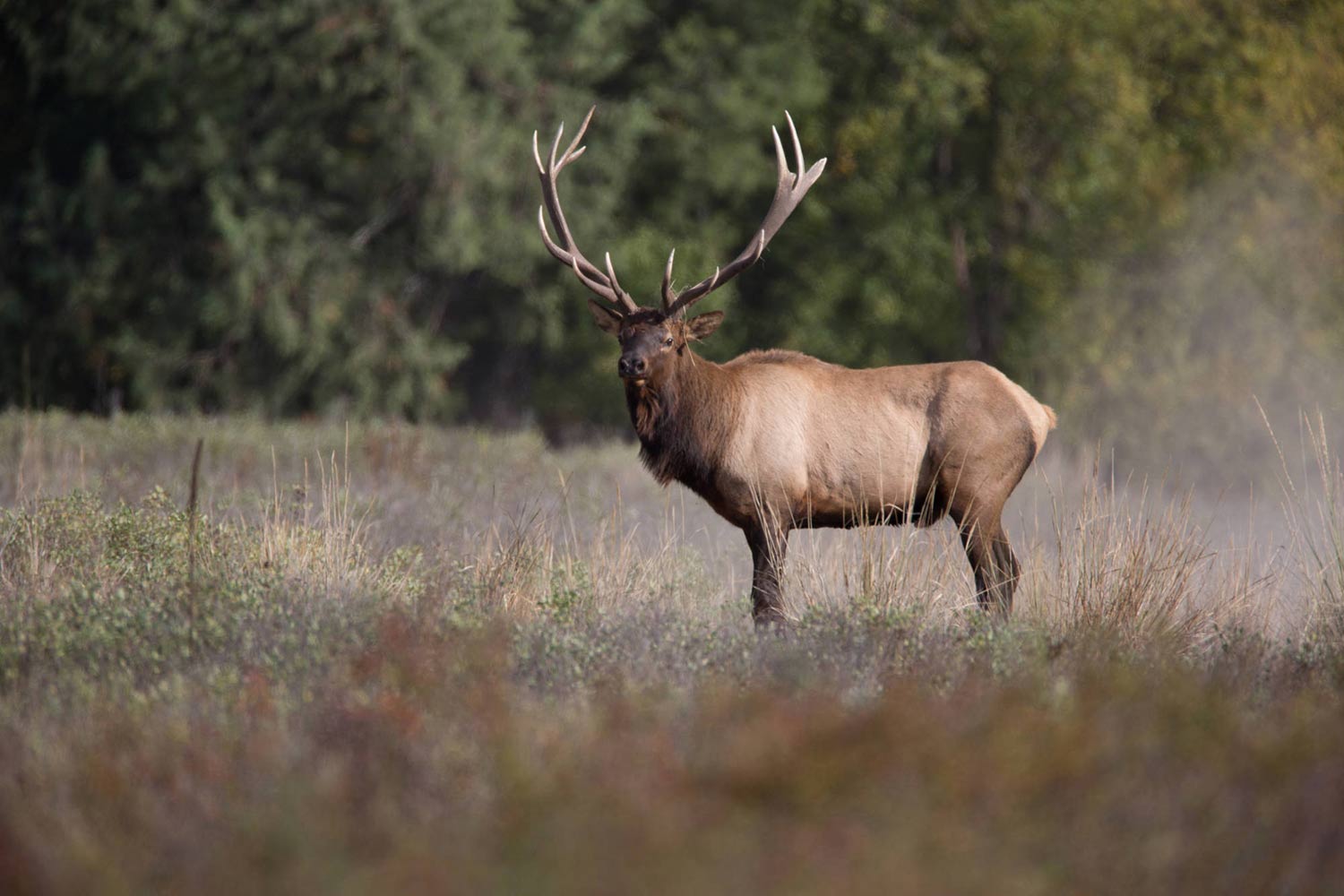
Denver
Best Public Option: Pike National Forest
Best Species to Hunt/Fish: Elk, trout
Distance from City: 47 miles
Acres: 1.1 million
If you want access to big game hunting and trout fishing, Pike National Forest is the place to go. About an hour outside of Denver, millions of acres of primitive and undeveloped land are yours to explore and you can do so by ATV, horseback, or foot. Besides wapiti and trout, bears, antelope, deer and bighorn sheep share this rugged country with elevation variations ranging from 8,000 to 14,000 feet, depending on where your boots take you. The forest has many different wilderness areas, including the over 119,000-acre Lost Creek Wilderness, which is accessed by a 136-mile trail network, if you really want to unplug. —K.S.
Seattle
Best Public Option: Lake Washington
Best Species to Hunt/Fish: Coastal cutthroat trout, bass, yellow perch, black crappie
Distance from City: 9 miles
Acres: 21,933
Surrounded by private land and located on a narrow isthmus between Puget Sound, hunting near Lake Washington is limited, but fishing sure isn’t. Lake Washington is a year-round fishing mecca with plenty of bank access, boat ramps (at Kenmore, Magnuson Park, Gene Coulon Park, and Rainier Beach Park) and 29 public fishing piers—the most popular ones are in Waverly Park, Marina Park, the Old Ship Museum Park, Gene Coulon Memorial Park, and Seward Park. According to the Washington Department of Fish and Wildlife, some areas are closed to fishing around the floating bridges and there is a minimum size regulation for steelhead trout (20 inches) in the spring, but, otherwise, there’s ample fishing for a variety of different species, including black crappie, brown bullhead, coastal cutthroat trout, common carp, green sunfish, kokanee, largemouth bass, largescale sucker, northern pikeminnow, pumpkinseed, sunfish, rock bass, smallmouth bass, and yellow perch. You could even get lucky and hook a chinook, Coho, or sockeye salmon. Check the annual Washington Sport Fishing Rules for all regulations.
Kansas City
Best Public Option: Baltimore Bend Conservation Area
Best Species to Hunt/Fish: Whitetail deer
Distance from City: 67.5 miles
Acres: 1,202
Just about an hour outside of Kansas City puts you in a forest steeped in history and with hunting opportunity a-plenty. During the early 1800s, Lewis and Clark passed through what’s now known as the Baltimore Bend CA on the Missouri River. According to the Missouri Department of Conservation, this is where early river traffic hit its peak. Today, hardwood trees make up the majority of the area—roughly 80 percent—and there’s plenty of wildlife nestled within the native grasses and grain crops.
While deer may be your main focus, you can also hunt quail, rabbit, turkey, squirrel and dove, plus fish for black and white bass. Camping is also allowed as is trapping, but you need a special permit for that. The Big Muddle National Fish and Wildlife Refuge is one of its borders and contains the Baltimore Bottom Unit. That unit is run by the U.S. Fish and Wildlife Service, and while open to fishing and hunting, it is closed to motor vehicles, ATVs, horses and bicycles. —K.S.
St. Louis
Best Public Option: August A. Busch Conservation Area
Best Species to Hunt/Fish: Whitetail deer, mallards
Distance from City: 33 miles
Acres: 6,987
There’s a long list of regulations at August A. Busch Conservation Area, but there are also some fantastic managed hunting opportunities at this site. Deer, duck, and turkey hunting all fall under a draw system that only allow a certain number of hunters access each year. There is no way to apply for the tags electronically. You have to drive to the site office and apply, which is advantageous, because many folks won’t take the time to do that. You should, because from the reports I heard, all three species are plentiful. If you don’t get selected the first year, keep trying.
Rabbit hunting is allowed from Jan. 1 to Feb. 15, and that is a good time to not only chase bunnies, but also get the lay of the land. In September, there is dove hunting, you just have to possess a hunting tag and report the number of birds bagged. Trapping, and predator hunting are OK as well, but again you have to a special permit and the hunting must take place in the seasons outlined by the site managers. There are also youth seasons to take advantage of, but that also requires a trip to the CA office to apply. Shooting ranges and bow ranges are available as well.
There are 28 lakes and ponds totaling 550 acres for anglers to fish at August A. Busch. All you need is a state permit, but some of the lakes do have specific regulations (one lake is just for children 15 years old and under, a few others are catch-and-release only). You can snag a variety of species, including largemouth bass, white bass, stripers, catfish, crappie, musky and others. A few of the lakes are actually stocked with trout, but you will need a special trout permit to fish them. Personal boats are not allowed at the site, but you can rent them April through September. Only electric motors are permitted. —J.G.
